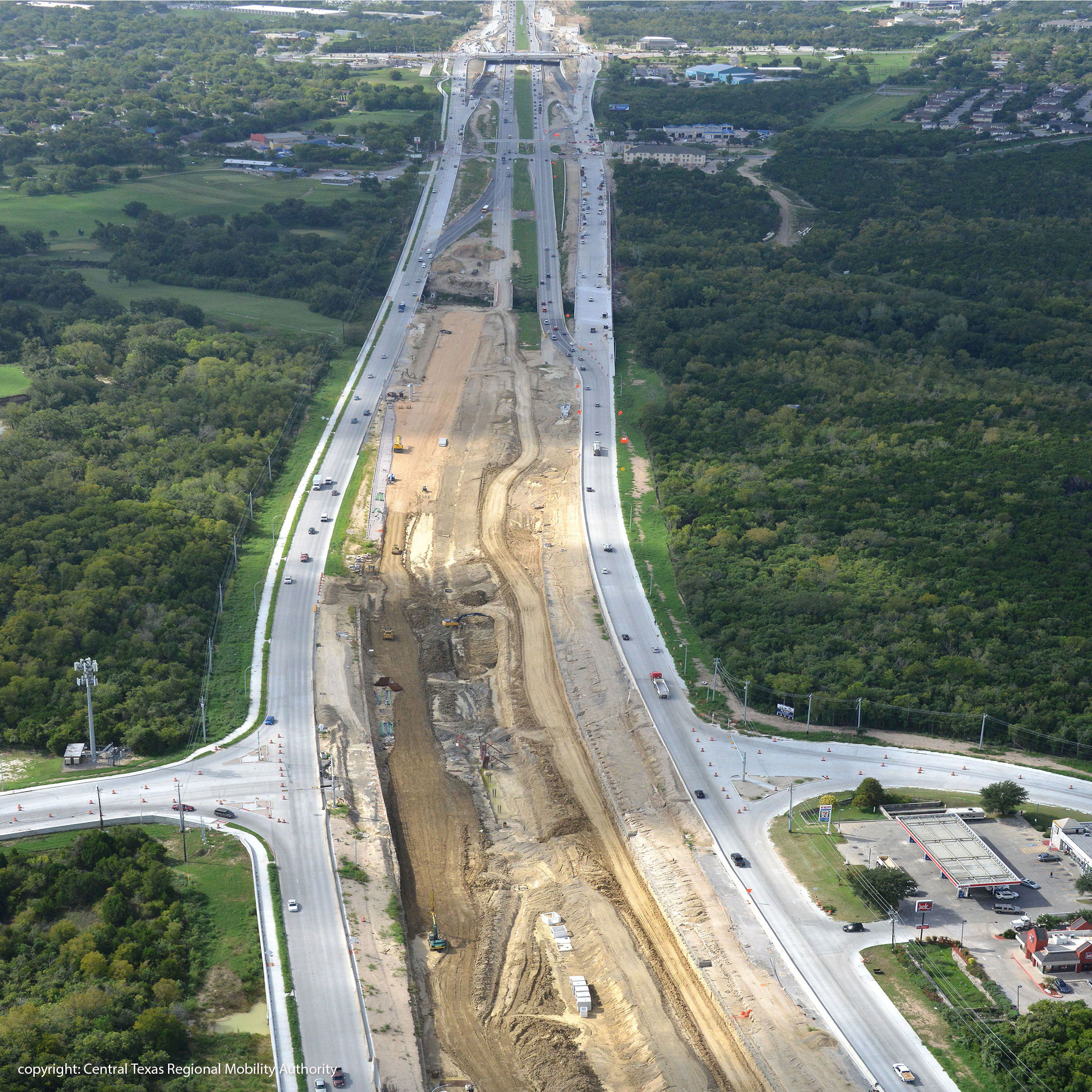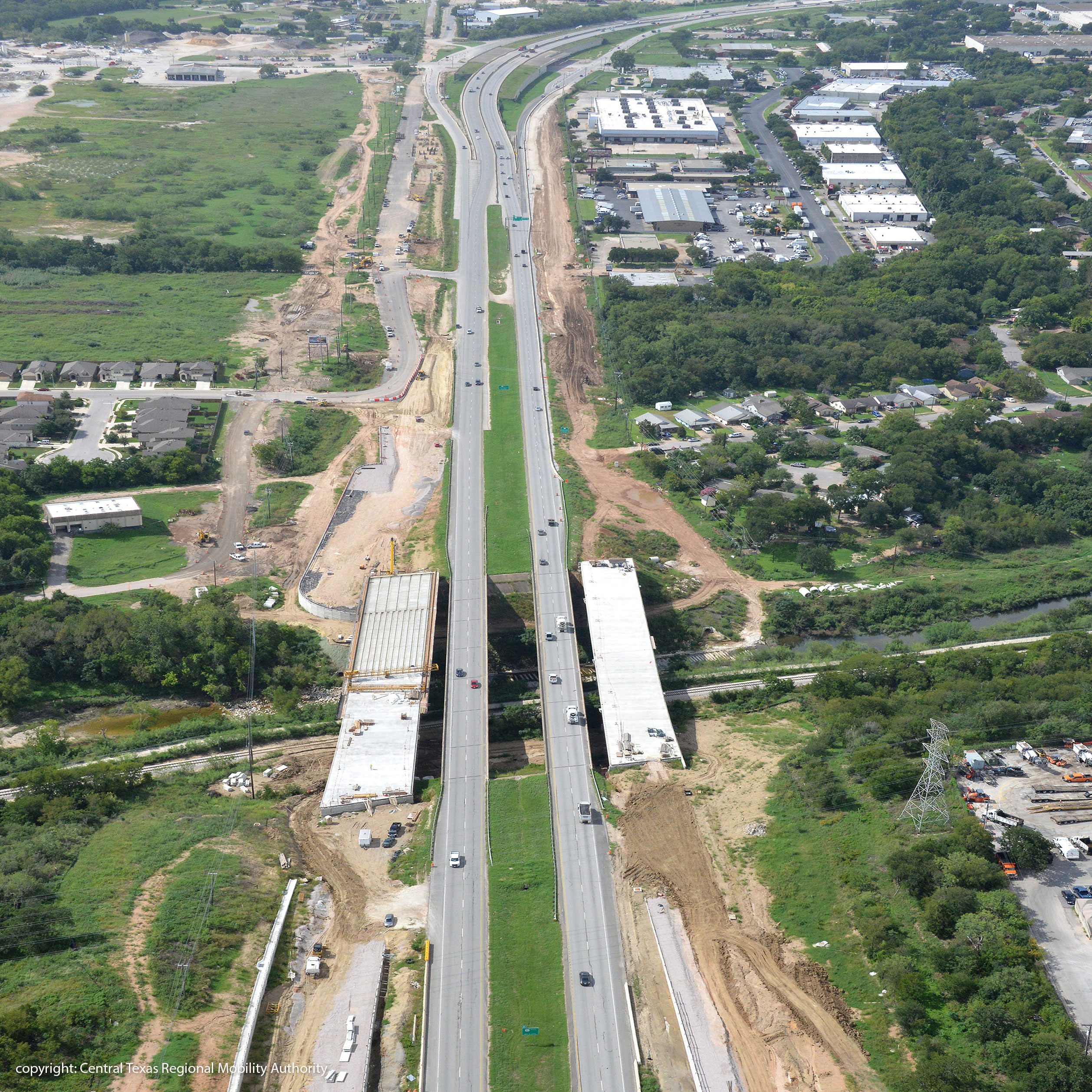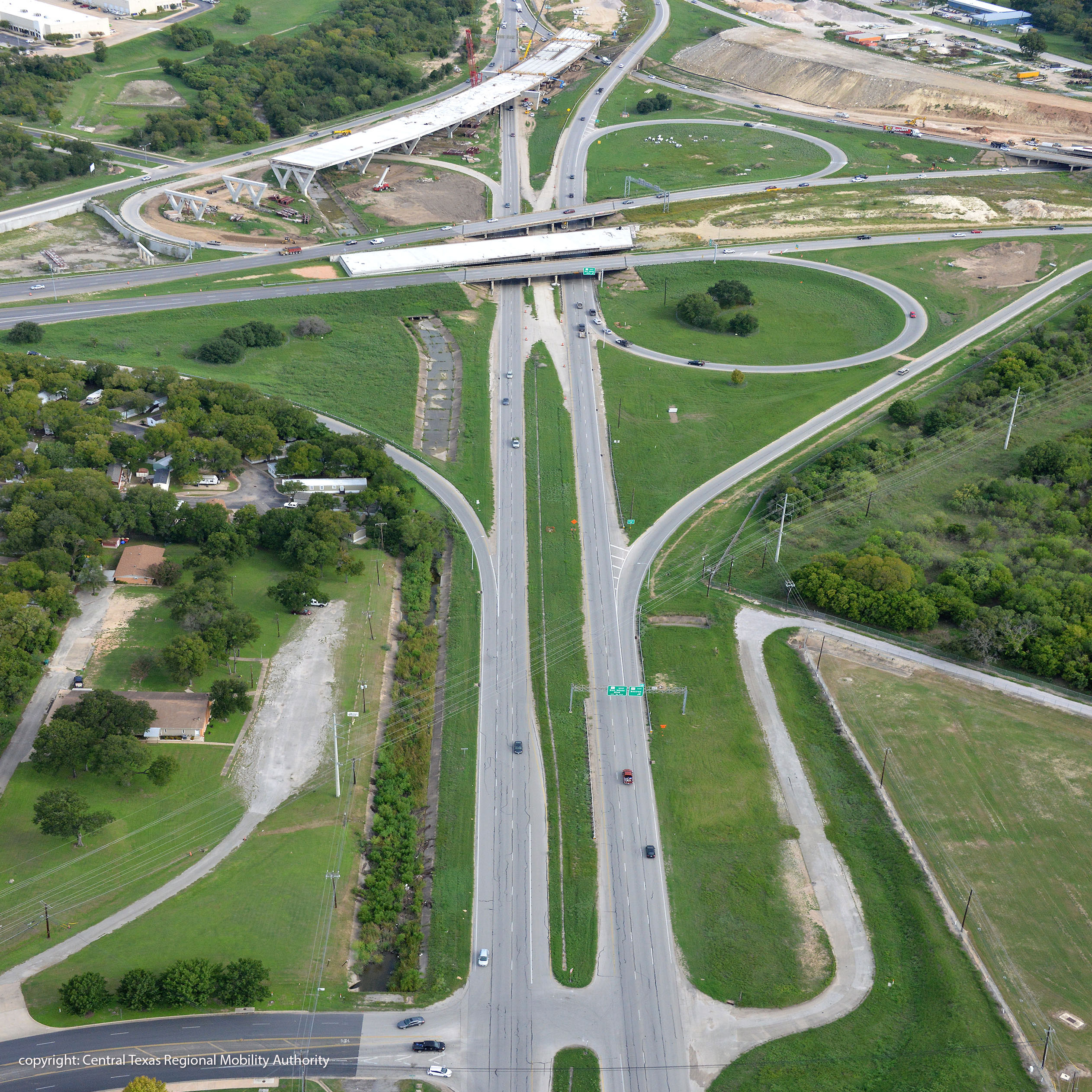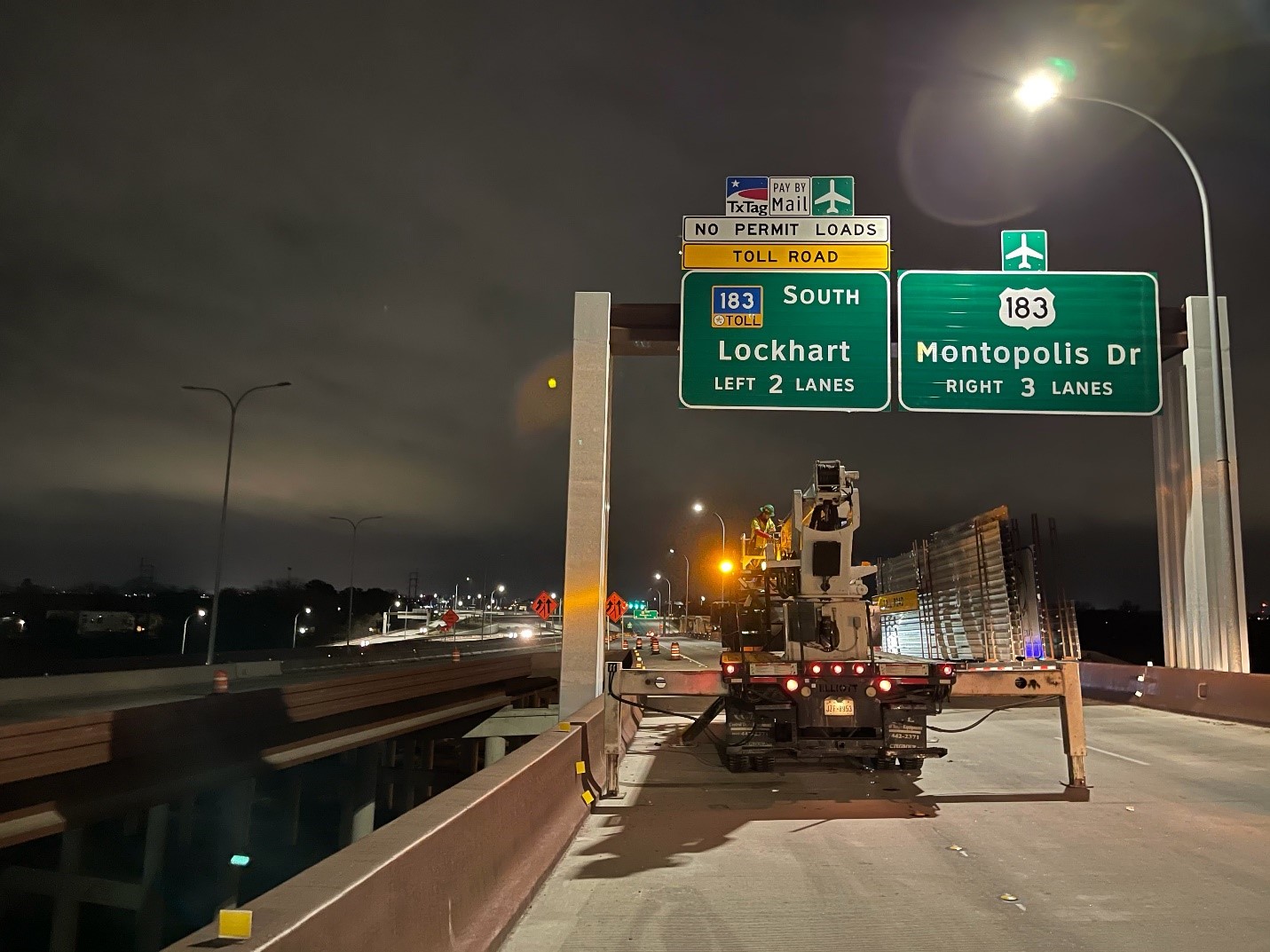CTRMA US 183S Bergstrom Expressway
Finding Transportation Drainage Solutions for New Austin-area Expressway
Project Purpose
The Central Texas Regional Mobility Authority (CTRMA) 183S Bergstrom Expressway Project is constructing a new tolled expressway with three lanes in each direction on an eight-mile section of US 183S between US 290 and SH 71. In addition, the non-tolled US 183S general purpose lanes will be improved with up to three lanes in each direction, and $25 million in pedestrian and bicyclist facilities will be constructed, including bike lanes, a shared use path, and three pedestrian cross-over bridges. The CTRMA is delivering the project through a design-build process. The project will be fully open to the traveling public in 2021.
Project Approach
DRAINAGE IMPACT STUDY
KFA was contracted to prepare a preliminary drainage impact study for the project corridor. The drainage impact study assessed the project’s impacts at each outfall location, evaluated the project risks to assess potential mitigation, and assessed adequacy of right-of-way and easements. KFA prepared the drainage section of the technical provisions of the design-build contract to establish drainage criteria and design requirements for the design-build developer.
The project corridor transects five watersheds, from north to south: Walnut Creek, Little Walnut Creek, Boggy Creek, Colorado River, and Carson Creek. KFA used the best available hydrologic and hydraulic models for these watersheds from the City of Austin and modified them for the project analyses. In addition, KFA created new models when those available from the City were not at an appropriate resolution for this study. Schematic bridge and culvert configurations were incorporated into the models, and differences between pre- and post-project peak flows and water surface elevations were assessed for locations upstream and downstream of the outfall crossings.
Our drainage engineers developed solutions to the following project challenges:
- Organizing Information: US 183S is a roadway that has been studied and reviewed frequently since the 1980s. As such, there was a large quantity of information to be reviewed and cataloged for our analysis, including as-built plans, proposed reconstructions that were never built, other drainage studies, the current schematic, City studies and data, and adjacent development plans. Once organized, this information provided valuable context for our analysis.
- Existing Flooding Issues: The southern terminus of the project is the US 183S and State Highway 71 interchange, which is located within the main stem of the Carson Creek 100-year floodplain. The frontage roads and mainlanes are subject to flooding as culverts underneath US 183S and SH 71 are significantly undersized. While it is not within the scope of this project to resolve the extensive existing flooding issues at this interchange, KFA worked with the project team to develop an interim approach that considers the current project constraints while preserving flexibility for future solutions to improve flooding at the interchange.
- Developing Adverse Impact Criteria: A challenge of all drainage studies and impact analyses is defining and developing consensus for the conditions that need to be considered to assess adverse impacts, as well as the criteria that need to be met to make a statement of “no adverse impacts.” KFA worked closely with the project team to develop language and specific requirements, some tailor to individual outfalls, for the technical provisions in an effort to reduce conflicts and during the design-build phase of the project.
The KFA preliminary drainage study supported the project schematic, the Environmental Assessment document, and design-build procurement and development. In particular, our study provided a preliminary assessment of adverse impacts, recommendations for mitigation, and considerations for the final drainage study and evaluation that was prepared by the developer during the design-build phase.
DRAINAGE OVERSIGHT
KFA staff also supported the design-build developer procurement and later served in Deputy Design Manager and Drainage Oversight Lead roles. Our tasks included:
- Leading technical review process of all disciplines including roadway, bicycle and pedestrian facilities, structures (walls and bridges), geotechnical, drainage, traffic, ITS, maintenance of traffic, landscaping, and aesthetics;
- Working with all CTRMA GEC design oversight leads, TxDOT, and the design-build design leads to ensure that each submittal meets contract requirement, reviews provide added value, and review comments are resolved swiftly;
- Supporting public involvement team at stakeholder events and one on one meetings for scenarios ranging from general project awareness to design coordination; and
- Providing construction design revision reviews and issue resolution.
CONSTRUCTION SERVICES
During construction, we have assisted the CTRMA and Owner/General Engineering Consultant (GEC) oversight team with inspection, document control support, and construction phase engineering support. KFA provided four Senior Inspectors for the project and a Document Controls Technician. Our construction phase engineering support included review of design submittals, NDCs, and RFIs from the design-build contractor.
Project Results
KFA is currently providing oversight Design Manager and construction inspection services. Construction is scheduled to be complete in early 2021. The new expressway will improve local mobility in east Austin, provide a nonstop, signal-free route to the airport, and serve as an alternative to IH-35.




